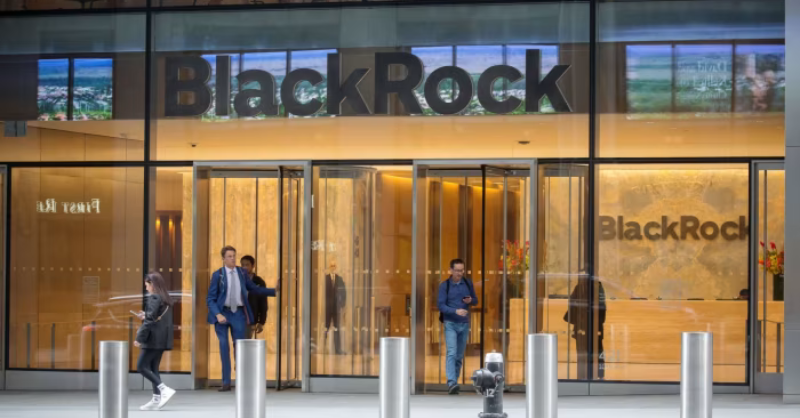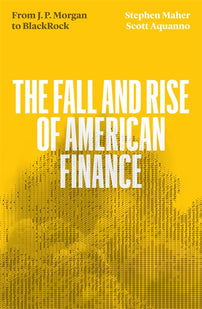The Rise of Asset Management Firms
Asset management firms have become “universal owners,” managing the total social capital of the United States.

The 2008 financial crisis marked a fundamental change in American capitalism. As the crisis management efforts of the Federal Reserve and Treasury brought state power more deeply into the heart of the financial system, successive rounds of quantitative easing facilitated the unprecedented concentration and centralization of corporate ownership in a small group of giant asset management companies. In the wake of the crisis, these firms— BlackRock, Vanguard, and State Street— displaced the banks as the most powerful institutions in contemporary finance, accumulating ownership power of a scale and scope never before seen in the history of capitalism. These asset management firms became central nodes in a vast network that incorporated nearly every major firm from every economic sector.
This amounted to a historic transformation of corporate power. Since the New Deal, the separation of ownership and control had been a central feature of the corporation’s organizational form: those who owned the firm (shareholders) were formally different from those who controlled the firm (managers). In the decades before the crisis, markets mediated the relationship between shareholders and managers: shareholders could “exit” by selling shares in underperforming firms. But with the rise of the Big Three after the financial crisis, the distinction between ownership and control broke down. As “passive investors,” asset management companies could trade only to reflect the changing position of firms they owned on a stock index, like the S&P 500 or Nasdaq. Unable to simply dump shares at will, they turned to more direct means of controlling industrial corporations.
Such financial influence over industrial corporations hadn’t been seen since the Gilded Age, when titans like J. P. Morgan dominated American capitalism. For more than a century, the concentration of ownership power was constrained by a basic trade-off: investors could own either a relatively small portion of a large number of companies or a large portion of a small number of companies. With greater diversification, in other words, stock holdings were diluted across many firms, limiting the control investors could exercise over any particular corporation. Investors could thus amass sufficient holdings to exert substantial power over only a relatively small number of companies. The rise of the giant asset management firms since 2008 has reversed this dynamic: the Big Three have become the largest shareholders in nearly every one of the largest and most important companies.
Today, the Big Three are collectively the largest or second-largest shareholders in firms that comprise nearly 90 percent of total market capitalization in the US economy. This includes 98 percent of firms on the S&P 500 index, which tracks the largest American companies— with the Big Three owning an average of more than 20 percent of each company. Equally remarkable is the rate at which this concentration took place following the 2008 crisis. From 2004 to 2009, State Street’s assets under management (AUM) increased by 41 percent, while those of Vanguard increased by an even more substantial 78 percent. The unique significance of BlackRock within this power structure, however, is reflected in the explosion of its AUM by a barely believable 879 percent in these years, becoming by far the largest global asset manager by 2009.
The pace and scale of this shift heralded a new phase of American capitalism, defined by the unprecedented concentration of ownership, as well as the centralization of corporate control, around a small number of financial firms. Giant asset management companies now play a highly active, direct, and powerful role in corporate management— and they do so in relation to nearly every single publicly traded firm in the American economy. They have become “universal owners,” managing the total social capital of the United States.
The rise of the asset management firms revolves particularly around the preeminence of BlackRock. By 2022, BlackRock’s assets under management had reached $10 trillion. If one includes the assets it indirectly manages through its Aladdin software platform, this number approaches $25 trillion. BlackRock is now among the major owners of nearly every major publicly traded US company. Never before has the concentration of capital reached such a staggering extent.
Its power is reflected not only in the size of its assets under management, but also in its special connection to the state. Whereas George W. Bush chose Hank Paulson of Goldman Sachs to be Treasury secretary during his administration, Hillary Clinton and Joe Biden both considered BlackRock CEO Larry Fink for that post. Biden’s top economic advisor, Brian Deese, is also a BlackRock executive. All this points to the growing power of a new fraction of finance capitalists.
— An edited excerpt from The Fall and Rise of American Finance: from J.P. Morgan to Blackrock by Scott Aquanno and Stephen Maher.
[book-strip index="1" style="buy"]
